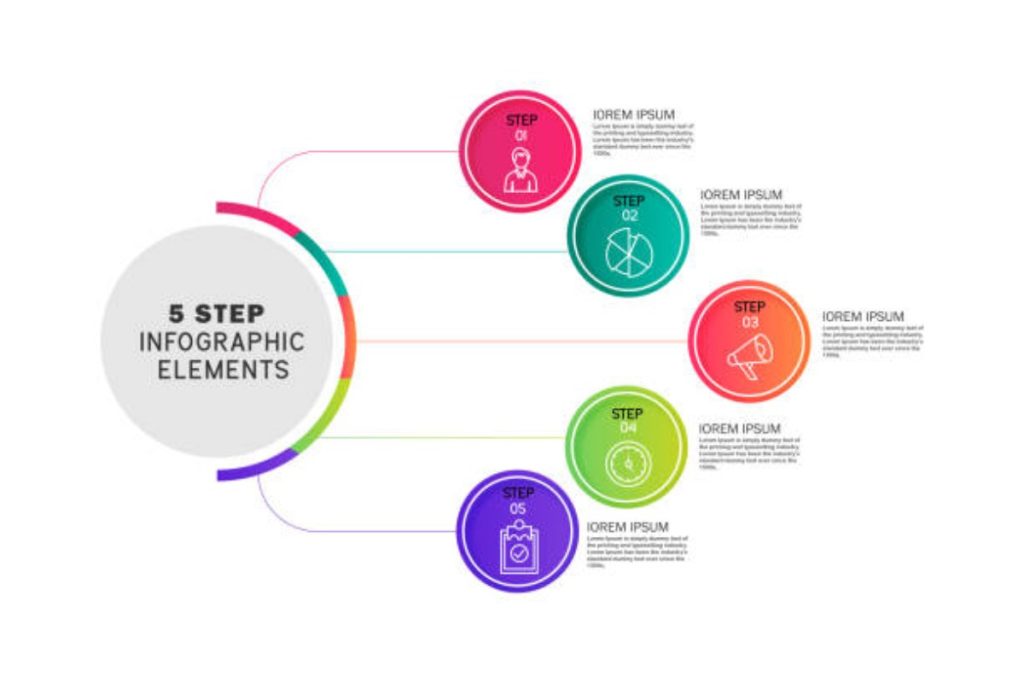Before comprehensive marketing became a requirement for drawing in your target audience, simply adding an image or chart to your information was enough to attract attention. This is no longer the case — to be interested, your audience must fully understand the information you are trying to convey without spending a lot of time doing so.
Infographics effectively and creatively convey your data with visual representations that help simplify complex information. To attract the necessary attention, your infographic must outcompete other infographics to gain and keep your audience’s focus. The following five tips will help elevate your infographic from humdrum to striking.
Table of Contents
1. Create an Outline
Your infographic must contain specific data and images to ensure you meet its purpose. Creating an outline can help you find the best location for each piece of information. This will help eliminate cramped areas and dead space, creating a more cohesive and professional infographic. Pre-made templates or layouts can help get this process started.
During the outline phase, choose the fonts and colors you will use. It is typically recommended to keep fonts limited to two: one font for headings and another for body content. The header font can be decorative or fun, but the body font should be simple and easy to read. This combination will draw attention without being overwhelming. Colors should be limited to three or four to be visually appealing and cohesive. The colors you choose should communicate the topic.
2. Showcase Your Brand
Your infographic will usually contain information related to one or two topics, but it is still a golden opportunity to draw people to your website, social media, or physical location. Your audience should immediately recognize your infographic as something you created. Even with a quick glance, people should identify your logo and related brand images like your tagline, color scheme, imagery, and tone of voice. Several other organizations may compete for your target audience’s attention and money, so you must ensure your content only drives them to you.
3. Use Storytelling to Communicate Key Messages
One of the greatest strengths of infographics is their ability to flow visually and cognitively. Since the reader doesn’t yet know the information you’re sharing, you must guide them on the journey to get there. All the information and images presented must be integrated, and readers should be able to connect the dots easily. The photos correlate to the text, helping the audience reach the desired conclusions.
A poorly done infographic will compile much information into graphical form instead of creating a logical thought process for the reader. Not only will a good infographic tell a story seamlessly and sequentially, but the story will also be straightforward for the reader to recall over time.
4. Balance The Information and Graphics
It would help if you achieved a delicate balance to create a visually appealing infographic that conveys all the pertinent information. Infographics too heavy on information may seem daunting for readers to approach, while infographics too heavy on graphics are unlikely to get everything you need. Your choice of images must be deliberate to ensure their usefulness to the overall infographic, reducing fluff images that do not effectively contribute.
It is essential to note that white space should be expertly integrated into your infographic. Though you may not have much area to work with, an infographic without any white space will seem cluttered and busy, causing many readers to skip past it for easier-to-read content.
5. Do Research
Though infographics can be fun and exciting, their ultimate goal is to provide accurate information. A strong infographic will use data from trustworthy sources and cite those resources for the reader to find. Infographics are not regurgitating this information but must be altered to an appropriate context. Even infographics presenting the same information must be formatted differently when targeting various audiences.
Understanding appropriate methods to present the data requires deep knowledge of your audience. Knowing their familiarity with the subject, their preconceived notions about it, and what information will be most helpful to reach your objective. For this reason, you will research the data you are presenting and the best ways to engage your target audience.
Final Thoughts
Even in the ever-changing marketing world, infographics are still incredibly relevant and helpful. However, a few rules can help you design an infographic that attracts your target audience and increases your presence within your industry. If you feel overwhelmed, a professional marketing company can help you incorporate infographics into your marketing plan.

